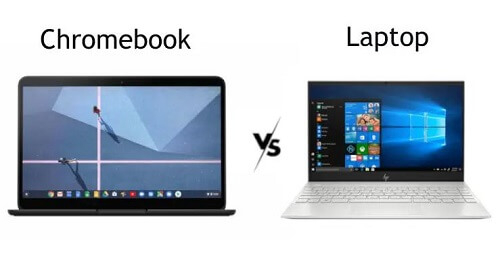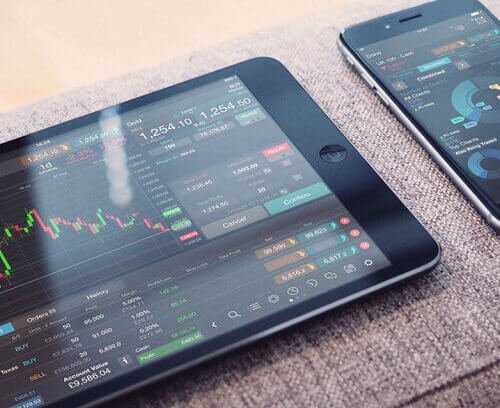Chromebook Vs Laptop, The Differences Between The Two
When contemplating the acquisition of a portable, lightweight computing device, the choice often comes down to deciding between a traditional laptop and a Chromebook.
The question arises: is the conventional laptop superior, or does the Chromebook distinguish itself with its minimalist operating system?
For those navigating the decision-making process between the two, this article aims to elucidate the disparities, enabling a well-informed selection based on individual needs.
Both laptops and Chromebooks epitomize portable computing solutions adaptable for diverse settings, be it atop a desk, a couch, or on one’s lap.
However, nuanced distinctions exist between these two variants, potentially influencing the discerning buyer’s ultimate decision.
Both conventional laptops and Chromebooks are classified as ‘laptop’ computers, owing to their portability and operational flexibility.
Yet, a closer examination reveals differentiating factors that warrant consideration. The ensuing discussion delineates the principal distinctions between a Chromebook and a laptop, shedding light on each aspect for enhanced comprehension.
Differences Between A Chromebook And A Laptop
Here are the main differences between a laptop and a Chromebook.
Laptops
Laptops are widely recognized and accustomed to utilizing PC operating systems, notably Microsoft Windows.
This operating environment provides users with a familiar desktop workspace, allowing them to launch installed programs, store documents, and engage in various computing tasks.
The inherent versatility of laptops makes them indispensable tools for users across different domains.
Equipped with substantial storage capacities, laptops often feature either Solid-State Drives (SSD) or Hard Disk Drives (HDD), providing users with hundreds of gigabytes to store a myriad of data.
Additionally, laptops are designed with practical features, including DVD players and USB ports, facilitating connectivity with peripherals and external devices.
The diversity within the laptop market is evident in specialized series such as the Lenovo Legion, tailored as gaming machines for immersive video gaming experiences.
Conversely, the Lenovo Thinkpad series caters to enterprise needs, exemplifying the adaptability of laptops for various purposes.
This underscores the extensive range of laptops available, each crafted to meet specific user requirements.
Chromebooks
Diverging from the conventional laptop paradigm, Chromebooks present a distinctive computing experience.
Notably, Chromebooks may experience performance lags in situations of low memory availability or while accessing internal storage components.
This divergence in performance is rooted in the operational disparities between Chromebooks and traditional laptops.
At the core of Chromebooks lies the Google Chrome OS, a lightweight operating system that utilizes the Chrome web browser as its primary interface.
The operational essence of Chromebooks revolves around online functionality, with the majority of tasks being executed through the Chrome web browser or cloud-based services. This intrinsic design contributes to the agility and efficiency characteristic of Chromebooks.
Unlike laptops that often rely on locally installed software, Chromebooks are tailored to leverage web applications.
These applications are accessed through the Chrome web browser, promoting a streamlined and online-centric computing experience.
Users can effortlessly engage with web-based tools by entering the respective URLs, epitomizing the Chromebook’s commitment to simplicity and accessibility.
Memory And Cloud Storage
An inherent advantage of Chromebooks lies in the efficiency of their web-based applications, strategically designed to alleviate demands on local storage systems.
Chromebook users typically store files, documents, pictures, and music in cloud storage, reducing the reliance on extensive local storage capacities.
Noteworthy is the deliberate choice of Chromebooks to forego the inclusion of the latest and fastest processors available in the market.
This intentional decision is rooted in the streamlined functionality of Chromebooks, which prioritize online processes and web applications.
Features commonly found in traditional laptops, such as dedicated graphics cards and expansive storage disks, are notably absent in Chromebooks.
This absence, while contributing to the lightweight nature of Chromebooks, also translates into a limitation in terms of customization options when compared to laptops.
Similarities
Here are the similarities between a laptop and a Chromebook
Cloud storage
The utilization of cloud storage is not exclusive to Chromebooks, as laptops also have the capability to store files and documents in cloud-based platforms.
Additionally, both Chromebooks and laptops are equipped with USB ports, although Chromebooks may have a slightly more limited number compared to laptops.
The distinction in USB port quantity is a notable difference in physical connectivity between the two devices, yet the broader concept of cloud storage accessibility is shared by both.
Battery
The lightweight nature of Chromebooks contributes to their enhanced battery efficiency, allowing users to extract more usage time from a single charge.
Laptops, on the other hand, have also seen improvements in battery life, with developers continually exploring innovative methods to incorporate additional batteries.
Both Chromebooks and laptops benefit from advancements in battery technology, resulting in longer usage periods and improved overall portability for users.
Portability
Chromebooks distinguish themselves with their exceptional portability, characterized by their thin and lightweight design.
This makes them highly portable machines that are easy to carry. Laptops, while also portable, come in a range of sizes, offering users flexibility in choosing a device that aligns with their preferences and needs.
The varying sizes of laptops cater to different usage scenarios, allowing users to select a model that strikes the right balance between portability and screen real estate.
Durability
Laptops are renowned for their robust frames and resilient keyboards, often designed for military and industrial applications, showcasing a level of durability that meets stringent standards.
Meanwhile, Chromebooks have made strides in enhancing their durability features, incorporating design elements such as fewer moving parts and other durability-focused enhancements.
This evolution reflects a convergence in the durability aspects of laptops and Chromebooks, as both strive to provide users with resilient and reliable computing solutions.
Conclusion
The distinctions between laptops and Chromebooks are evident, each offering unique features and functionalities.
Notably, Chromebooks are evolving to bridge the gap, with some models now providing users with options that resemble the familiar Windows-style desktop interface.
This convergence reflects an ongoing effort to combine the strengths of both devices, catering to diverse user preferences and needs in the ever-evolving landscape of portable computing.







